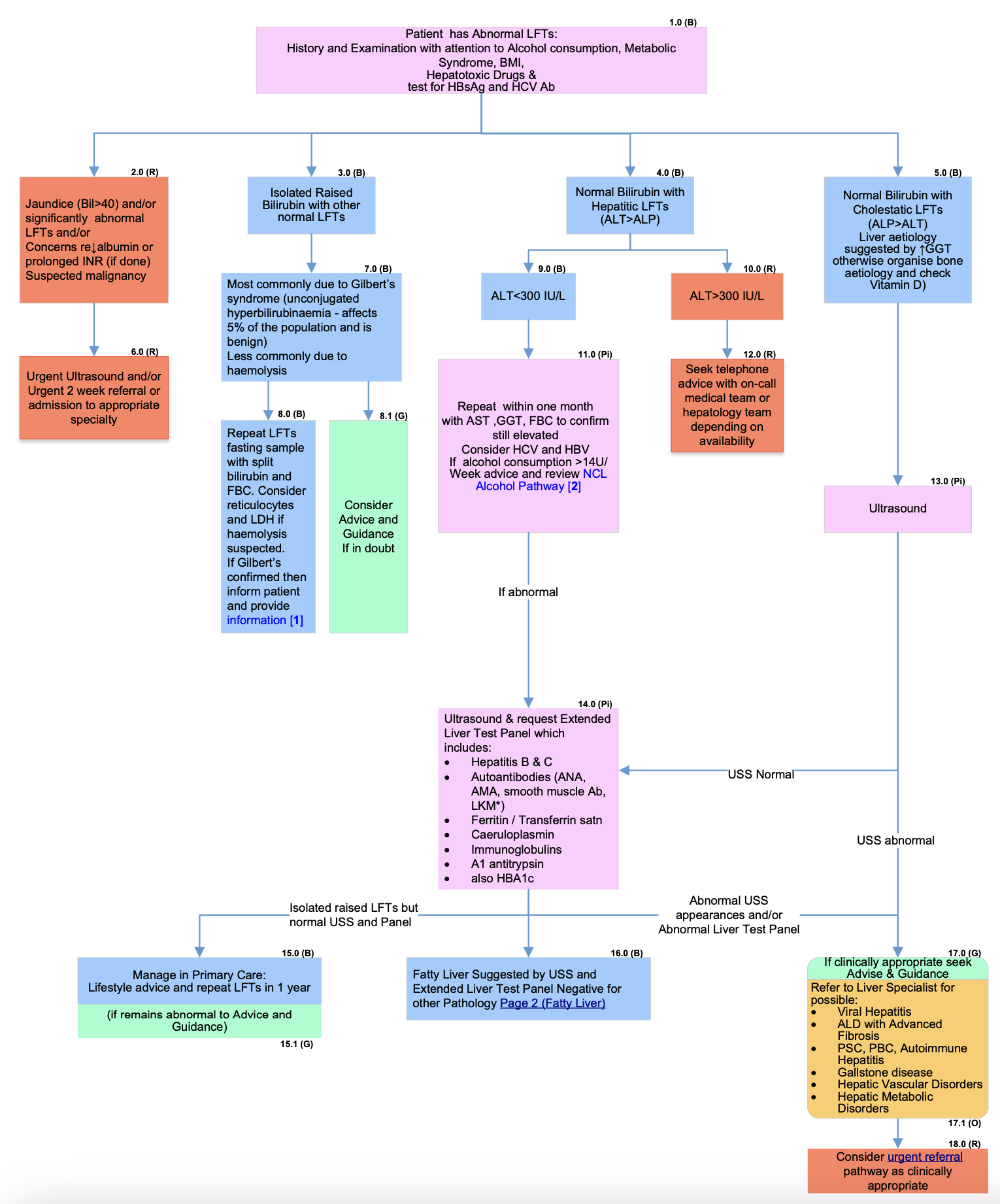Interpreting Liver function tests (LFTs)
by
Components of the LFT panel
- ALT (alanine aminotransferase): Marker of hepatocellular injury.
- AST (aspartate aminotransferase): Less specific; can be elevated in muscle injury.
- ALP (alkaline phosphatase): Raised in cholestasis; also found in bone.
- GGT (gamma-glutamyl transferase): Helps confirm hepatic source of raised ALP.
- Bilirubin: Elevated in hepatocellular injury or cholestasis.
- Albumin: Low in chronic liver disease or systemic illness.
- Prothrombin time (PT)/INR: May be included; prolonged in synthetic failure.
Initial pattern recognition
- Hepatocellular (↑ ALT/AST): Viral hepatitis, NAFLD, drug-induced liver injury, alcohol.
- Cholestatic (↑ ALP ± GGT): Gallstones, biliary obstruction, PBC, PSC.
- Isolated hyperbilirubinaemia: Consider Gilbert’s syndrome if unconjugated.
- Hypoalbuminaemia: Consider chronic liver disease, nephrotic syndrome, malnutrition.
Common scenarios in primary care
- Isolated mildly raised ALT: Check alcohol use, BMI, metabolic syndrome. Consider NAFLD.
- Raised ALP with normal GGT: Suggests non-hepatic cause, e.g. bone disease.
- Raised ALP and GGT: Suggests biliary disease—consider USS liver and referral if persistent.
- Persistent abnormal LFTs >3 months: Refer for imaging and hepatology work-up (BSG 2017).
